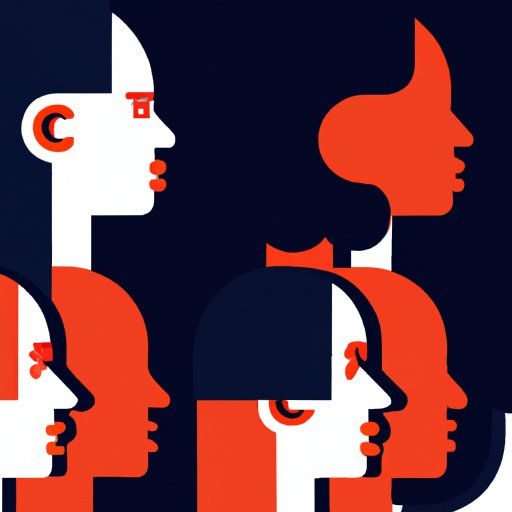Introduction
Unconscious bias is a term that has gained a lot of attention in recent years, but what exactly does it mean? Unconscious bias refers to attitudes or stereotypes that affect our understanding, actions, and decisions, without us being consciously aware of them. These biases can be based on factors such as race, gender, age, sexuality, religion, and more. While we may not intentionally hold these biases, they can still impact the way we interact with others and the decisions we make. In this article, we will explore the basics of unconscious bias, its impact, and practical strategies for recognizing and combating it.
Breaking down the basics of unconscious bias
Unconscious biases can impact our perceptions of other people, events, and situations. For example, if we have an unconscious bias against people who are overweight, we may be more likely to judge them based on their appearance rather than their abilities. Likewise, if we hold an unconscious bias against people who practice a certain religion, we may make assumptions about their beliefs or values that may not be accurate.
It is important to note that nearly everyone has unconscious biases, regardless of their awareness or intention. These biases are often rooted in socialization, culture, and experiences, and can be reinforced by media, stereotypes, and societal norms.

How to recognize and combat unconscious bias in the workplace
In the workplace, unconscious bias can lead to discriminatory hiring practices, unequal pay, and exclusion from opportunities. It is important for organizations to address unconscious bias and create a culture that is inclusive and welcoming to all employees.
One practical strategy for addressing unconscious bias is to provide training and awareness campaigns that educate employees about the impact of biases on decision-making. Organizations can also foster diversity and inclusivity through recruiting, hiring, and promoting individuals from diverse backgrounds. It is also important to explore alternative viewpoints and perspectives, which can broaden our understanding and challenge our biases.
However, addressing unconscious bias can be met with resistance or skepticism. Some people may feel defensive or uncomfortable acknowledging their own biases. It is important for leaders to create a safe and judgment-free environment so that employees feel comfortable discussing these issues.
Unpacking the science of unconscious bias
Psychological research has shed light on the nature and effects of unconscious bias. Studies have shown that biases can develop even in infancy, and can be reinforced by repeated exposure to certain patterns and stimuli. Additionally, unconscious biases can impact our decision-making in subtle ways, such as our perceptions of an individual’s likability or competence. However, critics of unconscious bias research point out that these studies are often conducted in lab settings, and may not always reflect how biases actually impact people in real-world situations.
The role of unconscious bias in perpetuating systemic inequality
Unconscious bias can contribute to systemic inequalities and discrimination based on race, gender, sexuality, and other factors. For example, biases can impact access to education, healthcare, and employment opportunities. Additionally, implicit stereotypes and prejudices can affect social interactions and opportunities for marginalized groups.
It is important to recognize that unconscious bias is often intertwined with other forms of discrimination and structural inequality. These issues cannot be addressed solely through individual awareness or training, but also require systemic changes in policies and societal norms.
Unconscious bias in the media
Media representation plays an important role in shaping our perceptions and attitudes towards marginalized groups. Positive representation can challenge biases and promote inclusivity, while negative stereotypes can reinforce harmful prejudices. As consumers of media, we can support diverse and inclusive content by seeking out media created by and featuring marginalized voices. Additionally, we can hold media creators accountable for problematic representation and push for more equitable and diverse representation in entertainment industries.
The conversation around unconscious bias and technology
As technology plays a larger role in our lives, the impact of unconscious bias in the digital age has become a growing concern. Technologies such as algorithms, data mining, and machine learning can amplify biases if they are built on biased data or operate according to biased assumptions. However, technology can also be used to mitigate biases by promoting diverse and inclusive content and creating more equitable opportunities.
A personal account of recognizing and addressing my own unconscious bias
Personally, I have had to confront my own unconscious biases at various points in my life. One experience that stands out to me was when I realized that I had a tendency to assume that women were less competent than men in certain professional settings. Recognizing this bias was uncomfortable and challenging, but it was also an opportunity for growth and reflection. Through education and reflection, I have been able to work towards addressing my own biases and becoming a better ally to marginalized groups.
Conclusion
Unconscious bias can have far-reaching effects on our perceptions, attitudes, and decision making. However, by recognizing the role that biases play in our lives, we can take steps towards creating a more equitable and inclusive society. By fostering diversity, promoting inclusivity, and challenging harmful stereotypes, we can build a better future for ourselves and for future generations.
